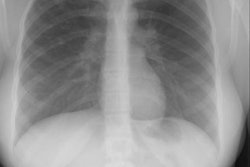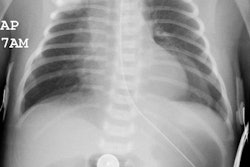Spectrum of manifestations of Swyer-James-MacLeod syndrome.
Lucaya J, Gartner S, Garcia-Pena P, Cobos N, Roca I, Linan S
PURPOSE: The clinical and imaging findings of children with Swyer-James-MacLeod
syndrome (SJMS) were reviewed to
determine the incidence and type of bronchiectasis and analyze whether
the clinical course of patients with bronchiectasis
differed from that of patients without bronchiectasis. METHOD: Our
study population consisted of 13 patients. All had
inspiratory/ expiratory chest X-ray films, chest CT, and lung scans.
Eight underwent pulmonary function test. The results of
these studies at diagnosis and during follow-up were analyzed and compared
with the clinical features. RESULTS:
Bronchiectasis was demonstrated in nine patients, being saccular in
five and cylindrical in four. Expiratory slices were helpful for
demonstrating bilateral lung involvement that had not been suspected
on inspiratory CT scans or conventional radiographs. The
clinical features of the five patients with saccular bronchiectasis
resembled those of patients with classic postviral bronchiectasis
who suffered recurrent pulmonary infections; three of them underwent
lobectomy. The remaining patients presented mild
respiratory symptoms, with a spontaneous tendency toward improvement.
CONCLUSION: SJMS should be considered as a
spectrum disease. Bronchiectasis is not a universal finding. The presence
and type of bronchiectasis will influence clinical
manifestations and prognosis. Patients without bronchiectasis or with
cylindrical bronchiectasis had a lower incidence of
pneumonia episodes than those with saccular bronchiectasis.




